Catharine Courtauld
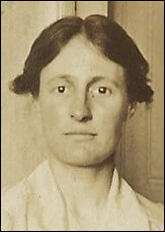
Catharine Courtauld, the daughter of Sydney Courtauld, a silk manufacturer, and his wife, Sarah Sharp Courtauld, was born on 25th May 1878 at Bocking Place, Bocking, near Braintree, Essex. (1)
The Courtaulds had arrived in England as Huguenot refugees at the end of the seventeenth century. Three generations of the family worked as London silversmiths. The silk firm was effectively founded in 1816 by Catherine's uncle, Samuel Courtauld. (2)
Her brother, Samuel Courtauld, was the head of the Courtauld textile business. (3) An art collector, he later founded the Courtauld Institute. (4) Both Catherine and Samuel were committed Unitarians and used their wealth to support social reform through community hospitals, educational trusts and charitable funds. (5)
When the 1901 Census was carried out, 22-year-old Catharine was not recorded in England so it is likely that she was abroad. According to a family member she was sent by her father to Germany to study music but studied sculpture instead. (6) On her return she established herself as an artist living at 4a Upper Baker Street, London. On two occasions Catharine Courtauld exhibited her sculpture at the London Salon that had been established by the Allied Artists Association. (7)
In 1908 Catharine Courtauld joined the Central Society for Women's Suffrage. The following year Alfred Pearse and Laurence Housman formed the Suffrage Atelier, an artists' collective campaigning for women's suffrage. (8) It claimed: "The object of the society is to encourage Artists to forward the Women's movement, and particularly the Enfranchisement of Women, by means of pictorial publications. Each member of the Society shall undertake to give the Society first refusal of any pictorial work intended for publication, dealing with the women's movement. In return the artist will receive a certain percentage of the profits arising from the sale of her or his work." (9)
Catharine Courtauld had a studio at No. 1, Marlborough Studios, 12A Finchley Road, N.W. London. (10) She joined the Suffrage Atelier and several of her designs, such as The Anti-Suffrage Ostrich (c.1909), The Anti-Suffrage Society as Portrait Painter (c.1912), The Anti-Suffrage Society as Prophet (c.1912), The Anti-Suffrage Society as Dressmaker (c.1912), The Prehistoric Argument (1912) and Waiting for the Living Wage (c. 1913) were produced as postcards. (11) Her monogram was usually "c" within a larger "C". (12)
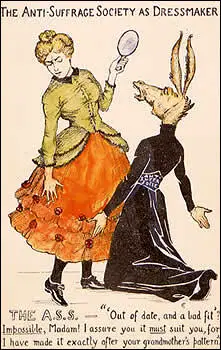
Muriel Matters of the Women's Freedom League was a strong supporter of this organisation. She argued that "she had found people who were impervious to argument and reason could be convinced by the postcard representing the lunatic and the lady, or an illustration of Mrs Poyser's classic remark on men and women." (13)
In 1912 while on a sailing holiday Catharine Courtauld fell in love with the ship's Mate, Wilfred Dowman. In 1908 he had married Nellie Wallace, formerly a cafe waitress, and gave birth to two children: Kathleen (1909) and Donald (1912). Despite this Catharine and Wilfred lived together. (14)
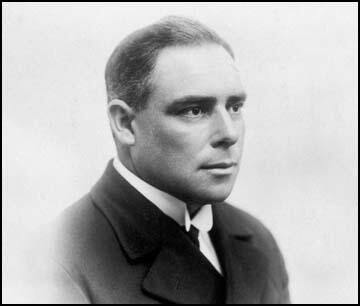
Catharine changed her name by deed poll to Dowman in 1918. (15) At this time, Wilfred Harry Dowman was serving as a Lieutenant in the Royal Navy Reserve. Nellie Dowman wrote to her husband " I want you for the sake of the children to return to me" and "Please let me hear that you will give up this woman with whom you have been living and make a home for us again." A divorce decree was granted on 14th April 1919. (16)
During the 1920s, Wifred and Catharine Dowman lived at Trevissome, Flushing, Falmouth, Cornwall, where their daughter Margaret Renee Dowman was born in 1923. Catherine used her wealth to buy the Cutty Sark that was then used as a training ship for Merchant Navy cadets. (17)
Wilfred Dowman died from a cerebral haemorrhage on 7th March 1936 while sailing in the Atlantic Ocean. He was buried at sea. (18)
Catharine Courtauld Dowman, at the age of 94, died on 19th September 1972, at Wyke Lodge, 92 Buxton Road, Weymouth, Dorset. She left a personal estate valued at £686,938.
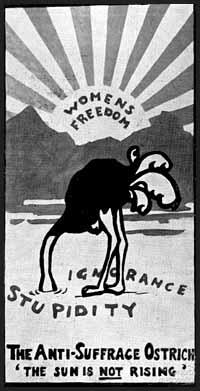
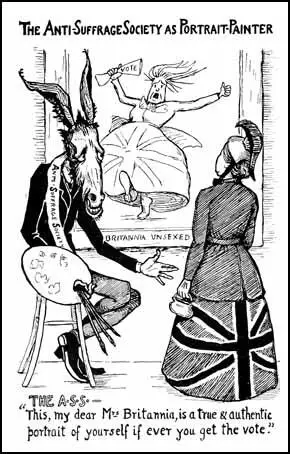
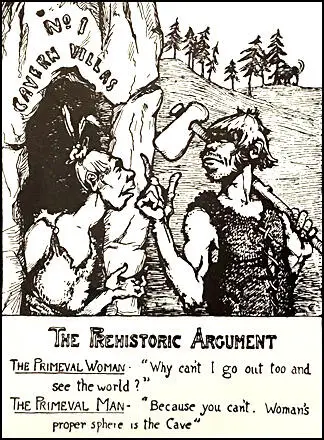
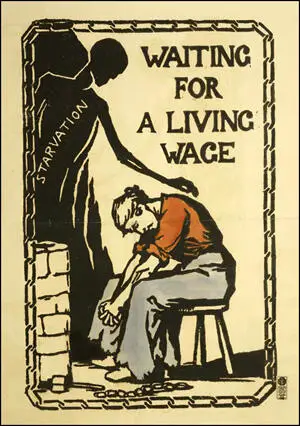
Primary Sources
(1) Amersham Museum, Women at War: Catherine Courtauld (2022)
Catherine Courtauld lived in Great Missenden with her sister Sydney Renee, both of whom were committed Suffragists and Unitarians. Like other members of the Courtauld textile family, Catherine used her wealth to support social reform through community hospitals, educational trusts and charitable funds. She used her art skills and membership of the Artists Suffrage League to promote the Suffragist message by publishing postcards and posters in the media, which became well known nationally.
(2) Elizabeth Crawford, The Women's Suffrage Movement: A Reference Guide 1866-1928 (2000)
Catherine Courtauld (later Mrs Dowman), sister of Samuel and Renee Courtauld, was a member of the Central Society for Women's Suffrage in 1906 and later became a member of the Suffrage Atelier. Several of her designs, such as The Anti-Suffrage Ostrich (c. 1909), The Anti-Suffrage Society as Portrait Painter (c. 1912), The Anti-Suffrage Society as Prophet (c. 1912), The Anti-Suffrage Society as Dressmaker (c.1912), The Prehistoric Argument (1912), and Waiting for the Living Wage (c. 1913) were produced as postcards.
(3) David Simkin, Family History Research (30th December, 2022)
Catharine Courtauld was born on 25th May 1878 at Bocking Place, Bocking, near Braintree, Essex. Catharine was the fourth of six children born to Sarah and Sydney Courtauld, a silk & crepe manufacturer and Justice of the Peace for Essex. Sydney Courtauld (1840-1899) was a member of the famous Courtauld family of textile manufacturers. In 1865, Sydney Courtauld married Sarah Lucy Sharpe (1844-1906), the daughter of a London solicitor and attorney. This union produced 6 children:
(1) William Julian Courtauld (1870-1940) - who, as a person of considerable financial means, devoted himself to charitable work and public service. In 1939, the year before he died, Samuel was created the 1st Baronet of Bocking.
(2) Sydney Renée Courtauld (1873-1962) - as the eldest daughter, Sydney was a woman of independent financial means and never had to earn a living. A moderate suffragist, she was a member of 'The Mid Bucks Women's Suffrage Society'.
(3) Samuel Courtauld (1876-1947) - who became the Manager, and later Chairman, of the Courtauld textile company, is probably best known as the founder of the Courtauld Institute of Art. Samuel was a collector of fine art.
(4) Catharine Courtauld (1878-1972) pursued an artistic career and supported the women's suffrage movement.
(5) John Sewell Courtauld (1880-1942) - served in the British Army in WW1, worked as an architect and was the Conservative MP for Chichester from 1924-1942.
(6) Stephen Lewis Courtauld (1883-1967) - served in WW1. A man of independent means and a Fellow of the Royal Geographical Society, he funded expeditions and carried out philanthropic work. Helped finance Ealing Film Studios and art galleries. Eventually settled in Southern Rhodesia (Zimbabwe) where he supported racial equality.
At the time of the 1881 and 1891 Census, Catharine resided with her parents and siblings at Bocking Place, Bocking, Essex, living in a house staffed by 8 or 9 servants.
When the 1901 Census was carried out, 22-year-old Catharine was not recorded in England so it is likely that she was studying Art abroad. Catharine did not attend a British art school and it is believed she studied sculpture in Germany.
In 1908, Catharine Courtauld was a member of the Central Society for Women's Suffrage. She is recorded as an artist at 4a Upper Baker Street. N.W. London in the 1908 edition of the London Post Office Directory and between 1910 and 1920,
Miss Catharine Courtauld is listed as an "artist" at No. 1, Marlborough Studios, 12A Finchley Road, N.W. London .
On two occasions Catharine Courtauld exhibited her sculpture at The London Salon.
At the time of the 1911 Census, Catharine Courtauld was residing with her older sister, 37-year-old Sydney Renée Courtauld at 'Bocken', Frith Hill, Great Missenden, Buckinghamshire. Her sister, Sydney, gives her occupation as "private means", while 32-year-old Catharine Courtauld states on the census form that she is a "sculptor (artist)".
On 12th November 1920, Catharine married Wilfred Harry Dowman (born 28th February 1879, Birmingham - died 7th March 1936, at sea).
Wilfred Harry Dowman had qualified as a 'Second Mate' of a foreign-going ship in 1900 at the age of 21.
On 19th October 1908, Wilfred Harry Dowman married Nellie Wallace (born 16th May 1878, Tranmere, Cheshire), formerly a cafe waitress.
This union produced two children - Kathleen Alice Dowman (born 1909) and Donald Gordon Dowman (born 1912).
In 1866, two members of the Courtauld Family signed the first mass suffrage petition to Parliament, considered to be the birth of the modern suffrage movement.
Catharine's cousin, Katharine Mina Courtauld (1856-1935) - the daughter of George Courtauld (1830-1920) Manager of Courtauld Silk Factory - was also a committed suffragist. Katharine Mina Courtauld ran her own farm and lived openly with Mary Gladstone (1856-1941).

